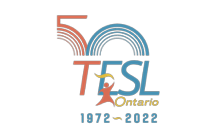Concept Questions are a common elicitation technique in Communicative Approach ESL lesson plans, and are particularly useful for teaching grammar and vocabulary. They are mainly used in the Presentation Stage of the PPP lesson planning framework, or in the Study Phase of the ESA framework.
Concept Questions are a good way of eliciting information from your ESL students and checking their comprehension rather than explaining the topic with long and difficult definitions that may only confuse the students. They are also a way of getting meaning across in a more effective and student-centered way.
Read: Learn to teach grammar with an internationally recognized online TESOL certification course
Presenting The Target Language in Context
The purpose of Concept Questions is not necessarily to get students to produce the target language. It is to elicit the function and the form. For example, if the target language is wh-questions, the goal in the elicitation is not to get students to produce a wh-question, but to get them to realize what the function is (asking) and what the structure is (grammatical form). The assumption here is that students have not learned the form or function before (You have a bit more to lean on when students have some prior exposure). So, their answers will not be the target form.
Concept Questions should come at the stage the teacher presents the language in context. The text or recording should contain clear examples of the form and include the structure the ESL teacher wants students to recognize. Concept Questions are used to elicit function, the intention of the speaker, and the grammatical structure that the speaker uses to express meaning (i.e. what he/she is trying to communicate to the audience).
For example, suppose that the target language is giving advice using “should.” The example dialogue will contain clear examples. After students are exposed to the language (and perhaps given some other warm-up task to do with the listening or text, for the first exposure), the function can be elicited:
“Is John giving an order?”
“Is John giving advice?”
Then, elicit form:
“Yes, he is giving advice. How do you know?”
“What words tell us that this is advice?”
“Yes, ‘should.’ Very good. What about the main verb after ‘should?’ How does it look?”
“Yes, the main verb is in base form.”
How Many Concept Questions Should ESL Teachers Use?
It’s not necessary to ask a lot of Concept Questions to get to the point. Two or three questions are often enough. Sometimes, ESL teachers could do with four or five if there is a lot to ask about, but should aim for three. There are even times when one question is sufficient as in the case of “You must wear a uniform to school” when eliciting the function of modal verb ‘must’ as ‘obligation’. All you have to ask is “Can you wear (jeans & a t-shirt/ a swimsuit/ a tuxedo/ pajamas/…..?”, or “Are you allowed to wear jeans..?”. It is one question but asked with different pieces of clothing so the students get the point that there is only one choice of attire.
US$320 OFF! Save on the 168-hour Hybrid TEFL Certificate course!
Keep Your Concept Questions Simple
Elicitation of the form will often overlap with systematization (summary of the function and structure on the board). In a case like the “should” example above, where the base form is one element of the form, you will want to make sure that there is a clear example of third-person singular so that it becomes clear that what students are seeing is the base form and not present simple (He should eat healthier food vs. He eats healthy food).
For other structures, your Concept Questions will vary, but they will draw attention to the essential elements of the form:
“Where did you go last night?”
The ESL teacher may want to ask questions like these ones: “Is it past or present?” “What is the form of the verb?” “Is there one verb or more?” “Where does the auxiliary verb go?” “Is there an auxiliary verb?” “Is there a question-word?”.
Keep the questions simple and answerable, and targeted toward the essential elements. These are the things your students will need to be clear about. If you can think of two or three questions that will guide them toward recognizing these elements themselves, the elicitation will be successful.
Read: What’s the difference between OnTESOL and other online TEFL courses?
Eliciting Function
Suppose students have had a presentation of the target language, which includes a sentence like John had served eight customers before 7:00. Using that example sentence as a reference point, some questions for eliciting function might be things like:
Is this past, present, or future?
(Past) When in the past? Do we know? (7:00) Was it exactly 7:00? Was it before? After?
So, do we have two things in the past? (Yes)
Which one is the first? (He served eight customers) Good. We can talk about two things in the past, and show which one is first.
Read: OnTESOL is accredited in the United States
Eliciting Form
To elicit form for a situation like this, it’s necessary to break down the individual items in the structure. (With other grammar situations, like teaching a new use for a certain modal, for example, sometimes students already know some of the elements).
Here is an example of how you might elicit form for the past perfect.
How many verbs do you see here? (Two)
Which one is the first? (Had) Right.
We always need this verb to talk about this situation of two past times.
It always looks like this – not “have,” not “has.” Is this the main verb? (No) Correct. This is an auxiliary verb.
What form is that verb? (Past participle)
Is this the main verb? (Yes) Exactly. This grammar is called past perfect. To make this, we use “had” and then the main verb in past participle form.
Learn to teach grammar communicatively with OnTESOL with the Advanced 120-hour TESOL Certificate or the 168-hour Hybrid TEFL Certificate.
OnTESOL: Online TESOL / TEFL equivalent to CELTA.
Find TEFL Jobs on the OnTESOL Job Board







It is absolutely helpful .